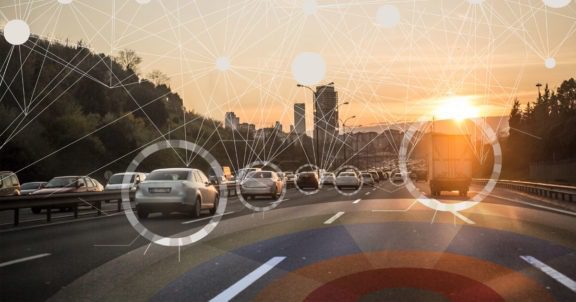Blog Post
Behind the Wheels Connected Vehicle Program
By Sara Sweeney
June 13, 2019

Recently, Wheels was honored with three Gold Stevie® Awards from the 2019 American Business Awards. I am proud that our Connected Vehicle Program received the top honor in the IoT Analytics Solution category. If you’re not familiar with our program, I’d like to share some details on its development.
Our vision for the connected vehicle platform was built on two principles: Our opposition toward creating a one-size-fits-all approach and our mission for supporting the future of mobility.
As we think ahead, we’re developing two-way connectivity to communicate with vehicles across multiple providers, which produces data and insights to power various Wheels product offerings.
Powering up vehicle connectivity
We recognize and support the fact that there is no single solution that can address the needs of all our customers. When we extend that thinking to vehicle connectivity it means we need a host of capabilities: a source agnostic platform, a normalization engine, and an integrated approach for leveraging existing data to facilitate predictive analytics.
For the non-techies, this describes the infrastructure required to build an operational connected vehicle program. Vehicle connectivity is possible now through plug-in and native in-vehicle tools that obtain near real-time vehicle and driver location, diagnostics and driver behavior metrics. The data retrieved from the vehicle is integrated with thousands of data points and embedded in FleetView™ where users experience visual narratives and predictive analytics. In the other direction, the platform can send commands to the vehicle such as unlocking the doors and starting the engine.
The cause and effect of vehicle connectivity
Not only is this analytics platform innovative, the information we glean helps us deliver innovations to other areas within our business. By gaining a deeper understanding of how our fleets operate, we can optimize end-to-end processes. In addition, having the ability to receive data from and send information to a vehicle drives efficiency and more importantly, safety. For example if a driver is speeding in a connected vehicle, Wheels receives that data, transforms it and absorbs it into various technology platforms. Our system flags the behavior as risky and that information is sent to the driver via Wheels driver technology tools, including the native mobile app and DriverView. The driver is now able to self-correct and avoid speeding in the future.
This supports our guiding principle of providing measurable results for our customers. In fact, one of our clients on the program used the data generated to identify vehicle allocation and underutilization patterns and by optimizing the usage of their fleet was able to realize $200,000 in cost savings.
Though it’s only the beginning, I like to think it’s an auspicious start. There’s lots of excitement across our organization about this technology. At a recent technology open house, we gave employees from across the organization a sneak peek at what we’re building. And everyone’s got an idea about how this technology and data can support our customers!
Vehicle connectivity will continue to evolve and Wheels is well-positioned to evolve right along with it. Between new advancements in analytics, technology, and available information, we believe we have an exciting product to offer and enhance in the years to come.